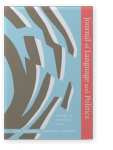Populism in performance?
Trump on the stump and his audience
Much commentary on the discourse of Donald Trump’s populist appeal has tended to focus on his use of Twitter, to the relative neglect of his campaign rallies. Yet his campaign rallies during the presidential election were arguably crucial for delivering the votes which secured his victory. Members of his own team, and Trump himself, certainly thought so.
Since the election Trump has continued to campaign in rallies in key states with increasing vigour, attracting
large audiences as the second term elections in 2020 approach.
These large-scale public events confirm the bond between Trump and his base. But they also require us to re-focus attention beyond Trump as an individual figure to the process of mutual engagement between him and his highly active and vocal
audience.
This article, by examining the overall communicative behaviour of participants at his rallies asks: “Is the
audience Trump’s creation or is Trump the audience’s creation?”
Article outline
- 1.Introduction: Trump’s campaign rally speeches: The research paradox
- 2.From William Jennings Bryan to Donald J. Trump: The conversationalisation and informalisation of public discourse
- 3.Trump’s speech-making: Two planes of discourse – Direct Discourse versus Oblique Discourse
- 4.Projecting audience response: The individual and the collective; invited versus uninvited applause
- 5.The repertoire of audience responses/modalities of participation
- 5.1
Clapping
- 5.2
Cheering and clapping
- 5.3
Booing
- 5.4
Laughing
- 5.5
Chanting
- 5.6
Gesticulating
- 6.Further Characteristics of Trump’s Direct Discourse
- 6.1
Phrasal Repetition as Coda, Reinforcement, and Response-Invitation
- 6.2Reported speech and hypothetical exchanges
- 6.3Favourable reference to us
- 6.4Unfavourable references to them
- 6.5Projecting a name
- 7.Conclusions
- Afterword, July 8th, 2020
- Acknowledgements
- Notes
-
References
References
Atkinson, Max
1984 Our Masters Voices. London: Methuen.

Bakhtin, Mikhail
1984 Rabelais and his World. Translated by
Helene Iswolsky. Bloomington: Indiana University Press.

Birdwhistell, Ray
1970 Kinesics and Context. Philadelphia: University of Pennsylvania Press.

Brazil, David
1985 The Communicative Value of Intonation in English. Birmingham: English Language Research University of Birmingham/Bleak House Books.

Bull, Peter
2006 “
Invited and uninvited applause in political speeches.”
British Journal of Social Psychology, 45(3), 563–578.


Bull, Peter
2016 “
Claps and claptrap: the analysis of speaker-audience interaction in political speeches.”
Journal of Social and Political Psychology 4(1): 473–492.


Charteris-Black, Jonathan
2014 Analysing Political Speeches. London: Palgrave Macmillan.


Coulthard, Malcolm, and Martin Montgomery
(eds) 1981 Studies in Discourse Analysis. London: Routledge.

Frith, Simon
2007 “
Live music matters.”
Scottish Music Review 1(1): 1–17.

Golway, Terry
(ed.) 2012 American Political Speeches. London/New York: Penguin Books.

Hall, Kira, Donna M. Goldstein and Matthew B. Ingram
2016 “
The hands of Donald Trump: entertainment, gesture and spectacle”
HAU: Journal of Ethnographic Theory 6 (2) 71–100.


Hazadiah, Mohamad Dahan
1991 “
The structure of topic in conversation” Ph.D. Thesis, University of Birmingham.

Heritage, John, and David Greatbatch
1986 “
Generating Applause: A Study of Rhetoric and Response at Party Political Conferences”
American Journal of Sociology, Vol. 92, No. 1 (
July 1986), pp. 110–157.


Higgins, Michael
2009 “
Populism and security in political speechmaking: the 2008 US presidential campaign”. In
Marsden, Lee and
Heather Savigny. (eds.)
Media, Religion and Politics. Farnham: Ashgate.
Chapter 7.

Higgins, Michael
2019 “
The Donald: Media, celebrity, authenticity, and accountability” in
Happer, Catherine,
et al. Trump’s Media War.


Hochschild, Arlie Russell
2016 Strangers in their Own Land: Anger and mourning on the American Right. New York/London: The New Press.

Hunston, Susan
2017 “
Donald Trump and the language of populism”
[URL] September 2017, Accessed May 10th, 2020.
Kissas, A.
2019 “
Performative and ideological populism: The case of charismatic leaders on Twitter.”
Discourse & Society.


Leith, Dick, and George Myerson
1989 The Power of Address: Explorations in rhetoric. London: Routledge.

Martin, James
2014 Politics and Rhetoric. London and New York: Routledge.

Montgomery, Martin
1977 “
Some aspects of discourse structure and cohesion in selected science lectures.” University of Birmingham: unpublished M.A. thesis.

Montgomery, Martin
2010 “
Defining ‘authentic talk’”.
Discourse Studies. 3(4): 397–405.


Ott, Brian L., and Greg Dickinson
2019 The Twitter Presidency: Donald J. Trump and the Politics of White Rage. London and New York: Routledge.


Pain, Paromita, and Gina Masillo Chen
2019 “
The President is in: Public Opinion and the Presidential Use of Twitter.”
Social Media and Society.
April-June 2019: 1–12.

Pearce, Michael
2005 “
Informalisation in UK Party Election Broadcasts 1966–97.
Language and Literature. 14(1): 65–90.


Scannell, Paddy
2014 Television and the Meaning of Live. Cambridge: Polity.

Schill, Dan, and John Allen Hendricks
2018 The Presidency and Social Media: Discourse, Disruption, and Digital Democracy in the 2016 Presidential Election. Taylor and Francis.

Sinclair, John McH
1966 “
Indescribable English” unpublished inaugural lecture, University of Birmingham.

Trump, Donald J.
2004 How to Get Rich. London: Penguin/BBC Books.

Widmer, Ted
(ed.) 2006 American Speeches: Political Oratory from Abraham Lincoln to Bill Clinton New York: Penguin Books/Library of America.

Wodak, Ruth, and Michal Krzyżanowski
Zompetti, J.
2019 “
Rhetorical Incivility in the Twittersphere: A Comparative Thematic Analysis of Clinton and Trump’s Tweets During and After the 2016 Presidential Election.”
Journal of Contemporary Rhetoric.

Cited by
Cited by 3 other publications
Charvátová, Denisa, Jakub Charvát & Eva Niklesová
2022.
Populismus jako komunikační strategie: případová studie SPD. In
Dyskursy polityczne w Polsce i Czechach po roku 1989: gatunki, strategie komunikacyjne, wizerunki medialne,

Raynauld, Vincent & André Turcotte
2022.
Replicating the 2016 “Lightning in a Bottle” Political Moment: Biden, Trump, and Winning the U.S. Presidency. In
Political Marketing in the 2020 U.S. Presidential Election,
► pp. 21 ff.

Statham, Simon
2021.
The year’s work in stylistics 2020.
Language and Literature: International Journal of Stylistics 30:4
► pp. 407 ff.

This list is based on CrossRef data as of 19 april 2022. Please note that it may not be complete. Sources presented here have been supplied by the respective publishers.
Any errors therein should be reported to them.
